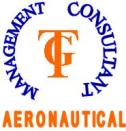Course Description:
This class will consist of a 2 day instructor led with direct discussions concerning
the requirements of the AS9100C standard including and not limited to:.
Ø Understand the changes from AS9100B to AS9100C:
Ø Clause-based auditing versus process based auditing;
Ø Risk and scale of activities required by the quality management
system;
Ø
Information required
to be supplied to the registrar Requirements:
♣
The requirements to attend and participate in
this class include:Internal
Auditors:
Ø As a minimum, the attendee must have sufficient prior knowledge and experience in the aerospace industry including prior
auditing skills and be able to discuss customer, organization and AS9100 requirements and documentation requirements.
Ø Copy of the AS9100C and AS9101D standards.
♣
Evaluation:
There will be written exam to measure the effectiveness
of the training material and evaluate the students comprehension of subject material.
Phase One
Welcome, Introductions
and Orientation
Changes from AS9100B to AS9100C
- New requirements and changes from the old requirements are understood- Why the changes- New requirements and what they mean for your organization- How to meet the new requirements can be met- What can be expected from
the certification body auditors
♣
Phase Two
Sections 1, 2 and 3 of the AS9100C Standard
♣
Phase Three
Process Auditing
·
The definition of, "Process"
·
Understanding the process
focus
·
Defining the processes
·
Understanding processes
versus activities
·
Explain
what certification body auditors will expect
♣
Phase Four
Sections 4,
5 and 6 of the standard
Auditing of Quality Policy, Quality Objectives and Management Review
- Interaction of the Quality Objects with the clauses of the standard
- Management commitment,
related to objectives and targets
- Determining processes; determining, setting and communicating policies and objectives,
monitoring, measuring, reporting and reviewing against key performance objectives.
- Comparison of previous audits
to present audit activity.
♣
Phase
Five
Risk Management
·
Defining risk management
· Differences between AS9100B Section 7.2.2 Risk Management and the AS9100C
· Risk management approaches for different sized companies
· Risk management tools including how and when to use them
· What registrar auditors may require.
Configuration Management
· Defining configuration management
·
Requirements explanation for a configuration
management system mandated by contract with large OEM.
·
Small company difference in minimal
circumstances
·
Accomplishing configuration management
in large and small companies
·
Document control, identification and
traceability in configuration management
·
What registrar auditors may require.
Project Management
· Project management - Large and Small Organizations
·
Project Management Auditing
·
What registrar auditors may require.
♣
Phase 6
Section 8
Customer
Satisfaction and Analysis of Data
· Customer Satisfaction and Analysis of data are used within the new Standard.
· Corrective Actions
·
Preventive Actions
· Continual
Improvement and interrelated processes.
♣
Phase 7
Administration of Nonconformities
· Concept of process nonconformities
·
Examples of process written nonconformities
· Containment and answer timelines
· Why a registrar auditor annotates NCR’s written under Section 4.1 (c) and (f)
·
What registrar auditors may require.
♣
Phase 8
Class Projects
Writing NCR’s and responding to NCR’s

